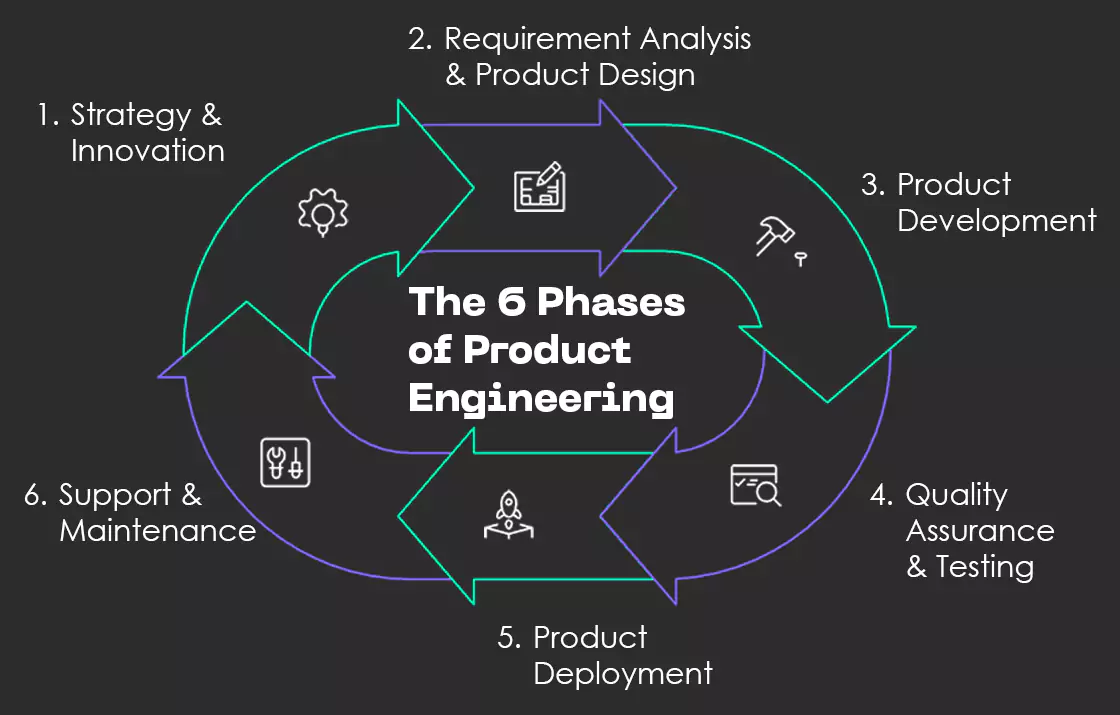Ever wondered how your favourite apps or software tools come
to life? The product development lifecycle is basically the roadmap that IT
teams follow to turn a brilliant idea into a working product that people want
to use.
Think of it like building a house – you wouldn't just start
hammering nails randomly, right? You'd need blueprints, permits, and a
step-by-step plan. That's exactly what the product development lifecycle does
for IT products.
What Exactly is the Product Development Lifecycle?
In simple terms, it's a structured approach that guides
teams through every stage of creating digital products – from the initial
"what if we built this?" moment to the final "wow, people are
actually using it!" celebration. It's particularly crucial in IT because
software development can get messy fast without proper planning.
The lifecycle ensures everyone's on the same page and
nothing important gets forgotten along the way. Plus, it helps teams avoid
those expensive "oops, we should have thought of that earlier"
moments.
The Five Key Stages Explained
1. Discovery and Planning
This is where the magic begins. Teams research market needs,
define target users, and figure out what problem they're actually solving. It's
like detective work – you're gathering clues about what users really want.
2. Design and Prototyping
Here's where ideas start taking shape. Designers create
wireframes and mockups while developers build early prototypes. Think of it as
sketching your house before construction begins.
3. Development and Testing
The heavy lifting happens here. Developers write code, build
features, and constantly test everything to make sure it works as expected.
It's iterative – build a little, test a little, fix a little, repeat.
4. Launch and Deployment
Time to show your creation to the world! This involves
releasing the product to users, monitoring performance, and being ready to fix
any issues that pop up.
5. Maintenance and Evolution
The work doesn't stop at launch. Teams continuously update
features, fix bugs, and add new functionality based on user feedback. It's like
updating your smartphone – regular patches and improvements keep everything
secure and running at peak performance.
Why This Matters for IT Teams
Following a structured lifecycle prevents common pitfalls
like:
·
Building features nobody wants
·
Missing critical security requirements
·
Launching products full of bugs
·
Going over budget or timeline
It also helps teams communicate better, set realistic
expectations, and deliver products that solve real problems.
The Game-Changer: AI in Product Development
Here's where things get exciting. Artificial intelligence is
revolutionizing how IT teams approach product development. AI can automate
testing, predict user behaviour, optimize performance, and even help with code
generation.
Instead of spending weeks manually testing every feature, AI
can run thousands of test scenarios in minutes. It can analyze user data to
suggest which features to build next or automatically detect potential security
vulnerabilities before they become problems.
For a deep dive into how AI is transforming every stage of
the product development lifecycle, check out our comprehensive guide on The Role of AI in Transforming the PDLC. You'll discover
specific AI tools, real-world examples, and practical strategies for
implementing AI in your own development process.
The Bottom Line
The product
development lifecycle isn't just a fancy framework – it's your roadmap to
building IT products that people actually love using. Combined with AI's
capabilities, it's becoming more efficient and effective than ever before.
Remember, successful products aren't built by accident.
They're the result of following a proven process, staying focused on user
needs, and continuously improving based on real-world feedback.









